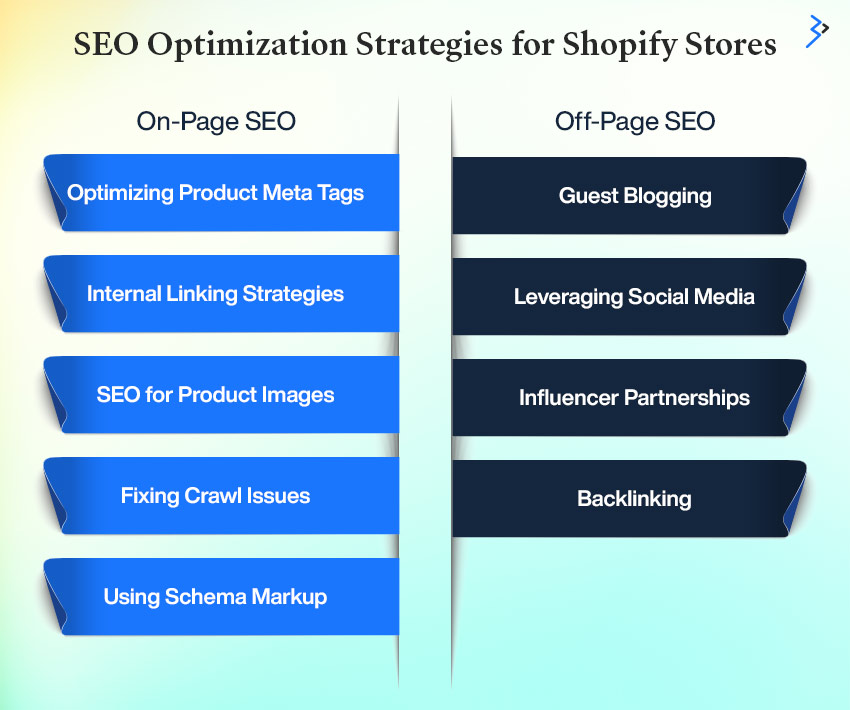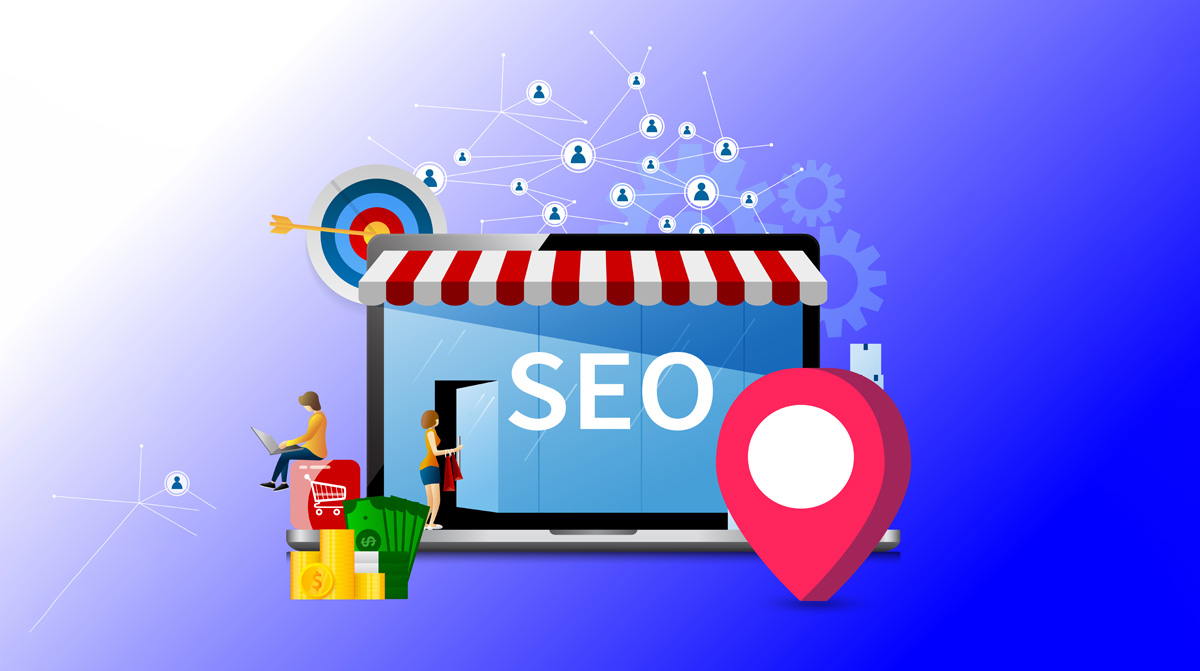Introduction:
In the bustling world of eCommerce, having a Shopify store is like owning prime real estate—but without the right SEO, it’s like having that store hidden in a back alley.
SEO plays a vital role in ensuring your Shopify store gets noticed by potential customers. After all, who doesn’t want a constant flow of traffic coming directly from Google?
By optimizing your store, you increase visibility and build credibility with search engines, which can lead to higher rankings, more clicks, and, ultimately, more sales.
However, Shopify SEO can be tricky. Many store owners face challenges like limited control over certain technical aspects, competition with big brands, and balancing SEO with a visually appealing store.
Navigating Shopify SEO Services can feel overwhelming, whether optimizing product pages, handling duplicate content, or getting those all-important backlinks.
This article will discuss the secrets you should know to optimize your profit and quality. The topics included are:
- Optimizing Shopify Store for SEO
- Keyword Research for Shopify Stores: Unlocking SEO Success
- On-Page SEO Optimization for Shopify Stores
So continue reading as we uncover the different aspects of Shopify SEO in the following sections.

Optimizing Shopify Store for SEO: The DIY
Optimizing your Shopify store for SEO is key to boosting your online visibility, and it’s not as daunting as it may sound. Focusing on a few critical areas can make your store more attractive to search engines and, more importantly, potential customers.
Importance of Site Structure
Think of your site structure as the blueprint of your online store. A clear, easy-to-navigate structure makes it simpler for search engines to crawl your site and for users to find what they need.
Group similar products into categories and use a logical hierarchy. This improves SEO and enhances the overall shopping experience, keeping visitors on your site longer and encouraging them to explore more.
URL Optimization
Your URLs may seem like a small detail, but they can make a big difference. Shopify automatically generates URLs, but you can (and should) tweak them to make them SEO-friendly.
Use short, descriptive keywords that reflect the page’s content. Avoid unnecessary numbers or symbols, and keep it simple. A clean, keyword-rich URL is more accessible for search engines to understand and gives shoppers a better idea of what to expect when they click.

Enhancing Store Speed and Mobile-Friendliness
Fast loading and a mobile-friendly design aren’t just bonuses—they’re essential. A slow store will drive customers away, and search engines don’t favor sluggish sites either. For more advanced performance improvements, Shopify Speed Optimization Services can help ensure your store meets the highest speed and SEO standards, offering a seamless experience for users and better search engine rankings.”
Shopify is built to be mobile-responsive, but you can further optimize by compressing images, minimizing the use of heavy scripts, and choosing lightweight themes. A seamless, speedy mobile experience helps with SEO and keeps today’s on-the-go shoppers happy.
Keyword Research for Shopify Stores: Unlocking SEO Success
Effective keyword research drives traffic to your Shopify store and boosts sales. With the right strategies, you’ll attract the right audience and stand out in the competitive world of eCommerce.
Let’s break down how you can master Shopify eCommerce SEO with smart keyword techniques.
1. Find Product-Specific Keywords
Your first task is identifying product-specific keywords that match your potential customers’ searches. Consider the exact words or phrases someone might use when looking for your products.
For example, keywords like “organic cotton t-shirts” or “sustainable fashion” should be on your radar if you sell eco-friendly clothing. These keywords help your store appear in front of the right audience—people already searching for what you offer.
2. Use Long-Tail Keywords for Targeted Traffic
Long-tail keywords are longer, more specific phrases like “best eco-friendly t-shirts for summer.” Although these keywords may have lower search volumes, they bring in highly targeted traffic.
People using these detailed search terms are often ready to buy, making them the ideal audience. Incorporating long-tail keywords into your product descriptions and blogs can significantly boost conversions.
3. Utilize Keyword Research Tools
Keyword research tools are your best friends for improving your Shopify SEO experience. Tools like Google Keyword Planner, Ahrefs, or SEMrush provide insights into search volumes, keyword difficulty, and competitor rankings. These tools also help you discover new keyword ideas and track your progress, ensuring you stay ahead in the eCommerce game.
On-Page SEO Optimization for Shopify Stores
When making your Shopify store stand out, mastering on-page SEO is a game changer. Here’s a quick breakdown of key tactics to help your products rank higher and attract more customers.
Optimizing Product Titles, Descriptions, and Meta Tags
Your product descriptions and titles are prime real estate for SEO. Ensure they’re clear and compelling while naturally incorporating relevant keywords. For instance, instead of just “Blue Shirt,” try “Men’s Blue Oxford Shirt—Casual & Comfortable.”
Add a well-crafted meta description that captures attention with a call to action and includes keywords. These small changes can make a big difference to your ranking! A Shopify SEO agency can help fine-tune this strategy for maximum impact.
Internal Linking Strategies
Internal linking is often overlooked but is a powerful SEO and user experience tool. Link-related products, blog posts, or even informative pages on your site.
For example, if you’re selling shoes, link them to your best-seller list or shoe care guide. This helps search engines crawl your site better and keeps customers engaged. One of the easiest Shopify SEO tips is to use keyword-rich anchor text in these links for better ranking.
SEO for Product Images (Alt Tags & File Names)
Images do more than just look pretty – they’re essential for SEO too! Ensure every image has an optimized file name like “mens-blue-oxford-shirt.jpg” and includes relevant alt tags. Alt tags describe the image to search engines, helping you rank higher in image searches. Bonus tip: keep file sizes small to ensure your pages load quickly!
Technical SEO for Shopify: Key Tips to Boost Your Site
1. Indexing and Sitemaps
One of the first steps in your Shopify SEO optimization journey is ensuring that Google can easily index your pages. A well-structured sitemap is essential for this. Shopify automatically generates a sitemap, but make sure it’s up to date and submitted to Google Search Console. This will help search engines crawl and understand your site, improving its visibility.
2. Fixing Crawl Issues
Crawl issues can prevent your site from ranking. Use tools like Google Search Console to identify and fix crawl errors promptly. Common issues include broken links, server errors, or pages blocked by robots.txt. Ensure your essential pages are fully accessible to search engines for better Shopify SEO optimization.
3. Using Schema Markup for Shopify Products
To get the most out of your product pages, incorporate schema markup. This structured data helps search engines understand and display rich information, like reviews, prices, and availability, directly in search results. It’s a vital part of any Shopify SEO checklist, as it can significantly boost click-through rates and attract more traffic.
Off-Page SEO Strategies for a Shopify Website
When boosting your SEO for a Shopify website, it’s not just about what happens on your site; what happens off your site matters just as much. Here are a few off-page SEO strategies that can make a big difference:
Importance of Backlinks
Backlinks are like endorsements from other websites, signaling to search engines that your content is trustworthy and valuable. The more high-quality backlinks you have, the more authority your Shopify site gains, which can improve your rankings. Ensure these backlinks come from relevant, reputable sources to maximize the benefit.
Guest Blogging and Influencer Partnerships
Collaborating with influencers and writing guest blogs can expand your reach to new audiences. By offering value through content and linking to your Shopify store, you drive traffic and boost your SEO. These partnerships increase your visibility, which can attract more potential customers.
Leveraging Social Media for SEO Benefits
Social media can indirectly influence your SEO. Sharing content across platforms increases its visibility, leading to more chances for backlinks and engagement. The more people discover your Shopify site through social media, the better your off-page SEO will perform. It’s an easy way to drive organic traffic and build brand authority.
Tracking and Analyzing SEO Performance for Your Shopify Store
Tracking and analyzing performance is key to long-term success when boosting your product SEO on Shopify. Let’s break down how to use Google Analytics and Shopify’s built-in tools to stay ahead.
1. Google Analytics: Your Data Powerhouse
Google Analytics is an absolute must for tracking SEO performance. With this tool, you can easily monitor your organic traffic — the visitors who find your store through search engines.
Keep an eye on the bounce rate, too. This shows how many users leave without exploring further. A high bounce rate could mean something’s wrong with your site, like slow load times or irrelevant keywords.
2. Shopify’s Built-in Tools: Simplicity Meets Insight
Shopify offers built-in analytics that are perfect for directly monitoring product SEO. Use Shopify’s dashboard to check traffic sources, top-performing products, and SEO performance insights. This helps you understand which products get the most organic attention and how to optimize others.
3. Key Metrics to Watch
To measure your success, focus on these core metrics:
- Organic Traffic: Are your products showing up in search results?
- Bounce Rate: Are visitors staying or leaving right away?
- Conversion Rate: Is traffic converting into sales?
Now You Know!
With more businesses venturing into eCommerce, Shopify plays a crucial role in the success of many entrepreneurs. However, without the right SEO strategy and approach, ranking your website or improving your sales is impossible.
Remember, Shopify SEO is crucial in helping you rank and improve your operations. Tap into the opportunity today!
Related Articles
-
SEO Best Practices For Your Magento Store
Magento is definitely SEO (Search Engine Optimization) friendly out of the box, but there are still a lot of things to consider from an SEO perspective if you are considering
-
The Hidden Cost To Deal With Unexpected eCommerce Challenges
Businesses across different industries have transformed drastically over the past couple of years. With the covid acting as a catalyst to the transition, the world has witnessed extensive digitization, further
-
A Beginner’s Guide to Marketing with the Adobe Experience Platform
The Adobe Experience Platform brings together a set of business suits to create a single, real-time customer profile. This platform enables you to provide personalized experiences to your customers. Adobe




